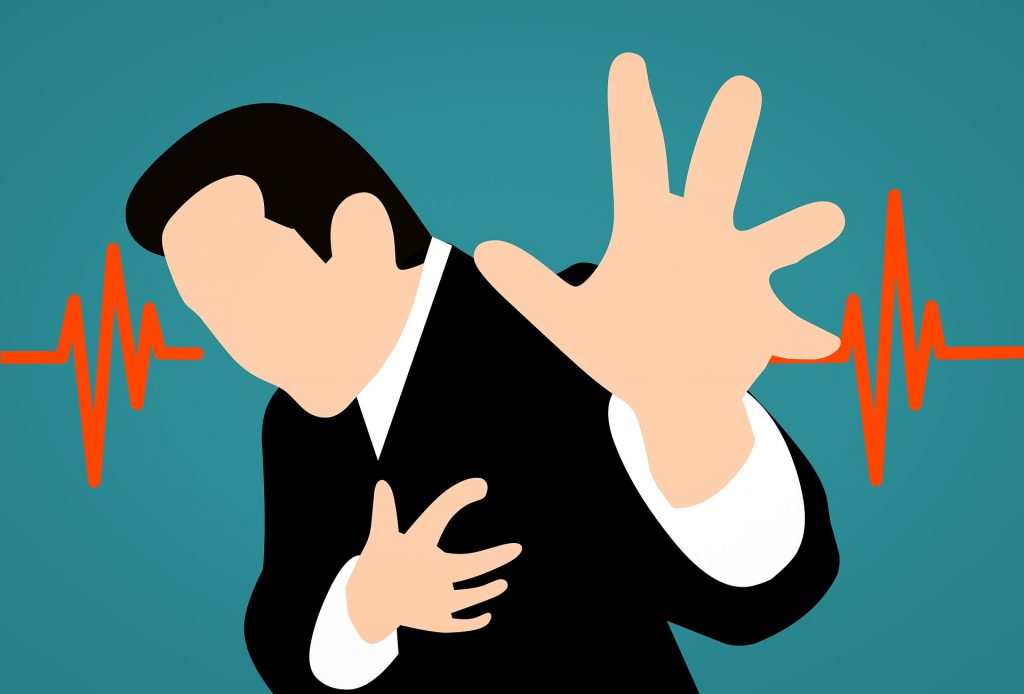
Cardiovascular disease and related disorders such as hypertension, are the leading causes of mortality and morbidity in the United States and around the world.1 This statement has been accepted as fact internationally and is supported by countless published scientific studies and position statements by various professional organizations. Physical therapy practice is not immune to the global burden of cardiovascular disease and risk factors. In fact, the evidence suggests that in outpatient physical therapy practice cardiovascular disease and risk factors are encountered quite often.2-6 This should come as no surprise to any practicing physical therapist, even in outpatient orthopedic practice. The risk factors for cardiovascular disease are almost identical to several risk markers and a few risk factors (most notably older age, physical inactivity and obesity) for the most common conditions encountered in orthopedic physical therapy practice, i.e. low back pain, hip and knee osteoarthritis and even tendinopathy.2-9
Cardiovascular disease also manifests in other areas of physical therapy practice. Cerebrovascular attack (stroke), as an example, is one the most commonly encountered conditions in neurology practice, which is due to vascular disease in the brain. However, patients don’t develop disease only in the cerebral vasculature, it develops diffusely throughout the arterial system. Even though the patient in a clinic may have received treatment for the acute stroke, they still have underlying vascular disease that needs to be considered throughout the course of their rehabilitation. There are many other examples of potentially causative or at least correlative relationships between cardiovascular disease and patient populations or movement disorders encountered throughout physical therapy practice. In addition to these relationships, when an individual develops a mobility disability (or any disability) their risk for developing cardiovascular disease increases.10,11
This vicious and interdependent cycle of immobility, disability cardiovascular disease places our profession in a unique position to intervene at multiple levels. These facts and this relationship, would also indicate that screening for cardiovascular disease by at least take a resting blood pressure and heart rate at the initial examination, irrespective of practice setting, should be standard and routinely performed. However, this is not the case, based on the literature3 and my personal experience. This disparity between scientific consensus regarding cardiovascular disease and screening behavior is most prevalent in orthopedic practice.3 Unfortunately, this is where we may have the best potential to intervene; to keep our patients out of that vicious cycle. It is also the setting where screening is arguably the most vital. Patients may be unaware of their risk factors, lack treatment or effective control and unlike in other practice settings they lack real-time physiological monitoring. Additionally, if a patient is evaluated in a state with direct access, a physical therapist may be the patient’s entry point to the healthcare system and potentially the first healthcare provider they have visited in years.
Various different excuses for not performing even this most basic screening (i.e., resting blood pressure and heart rate) are provided: unnecessary for a population, that it can be determined by subjective exam alone (including hypertension) and that it adds an unneeded time burden to the exam. All of which are ill-conceived, without any substantiation; especially screening for hypertension based on the subject of exam alone, considering that hypertension is asymptomatic. Including at least a measure of resting heart rate and blood pressure at the initial examination is not adding on to the physical therapy exam at all.
Taking resting vitals is filling in a gap that exists in our examination. It is replacing a component of the exam that should never be absent. It is returning our practice standards to a level where it should always have been across the profession.12 It is aligning ourselves with the scientific evidence and other allied healthcare professions who view cardiovascular disease as the serious problem that it is across the world. If we want to be the movement based professionals that we claim to be, we need to fulfill our unique role that can address this vicious cycle of immobility, disability and cardiovascular disease. If we truly want to transform society, we need address the disease that burdens society the most, which is cardiovascular disease. I think we have enough time in our exams to that.
1. Mozaffarian D, Benjamin EJ, Go AS, et al. Heart Disease and Stroke Statistics-2015 Update‚ÄØ: A Report from the American Heart Association. Vol 131.; 2015. doi:10.1161/CIR.0000000000000152.
2. Boissonnault WG. Prevalence of Comorbid Conditions, Surgeries, and Medication Use in a. J Orthop Sport Phys Ther. 1999;29(9):506-525.
3. Frese EM, Richter RR, Burlis T V. Self-Reported Measurement of Heart Rate and Blood Pressure in Patients by. Phys Ther. 2002;82(12):1192-1200.
4. Singh G, Miller JD, Lee FH, Pettitt D, Russell MW. Prevalence of Cardiovascular Disease Risk Factors Among US Adults with self reported osteoarthritis. Am J Manag Care. 2002;8(15):383-391.
5. Scherer S a, Noteboom JT, Flynn TW. Cardiovascular assessment in the orthopaedic practice setting. J Orthop Sports Phys Ther. 2005;35(11):730-737. doi:10.2519/jospt.2005.2102.
6. Arena SK, Drouin JS, Thompson KA, et al. Prevalence of Pre-hypertension and Hypertension Blood Pressure Readings Among Individuals Managed by Physical Therapists in the Home Care Setting‚ÄØ: A Descriptive Study. Cardiopulm Phys Ther J. 2014;25(1):18-23.
7. Ranger TA, Wong AMY, Cook JL, Gaida JE. Is there an association between tendinopathy and diabetes mellitus? A systematic review with meta-analysis. Br J Sport Med. 2016;50:982-989. doi:10.1136/bjsports-2015- 094735.
8. Leino-Arjas P, Solovieva S, Kirjonen J, Reunanen A, Riihimäki H. Cardiovascular risk factors and low-back pain in a long-term follow-up of industrial employees. Scand J Work Environ Heal.
2006;32(1):12-19. doi:10.5271/sjweh.971.
9. Fernandes GS, Valdes AM. Cardiovascular disease and osteoarthritis: Common pathways and patient outcomes. Eur J Clin Invest. 2015;45(4):405-414. doi:10.1111/eci.12413.
10. Klijs B, Nusselder WJ, Looman CW, Mackenbach JP. Contribution of chronic disease to the burden of disability. PLoS One. 2011;6(9). doi:10.1371/journal.pone.0025325.
11. Verbrugge LM, Juarez L. Arthritis disability and heart disease disability. Arthritis Care Res. 2008;59(10):1445-1457. doi:10.1002/art.24107.
12. APTA APTA. Guide to Physical Therapist Practice. Phys Ther. 2014;81(1):9-746.
